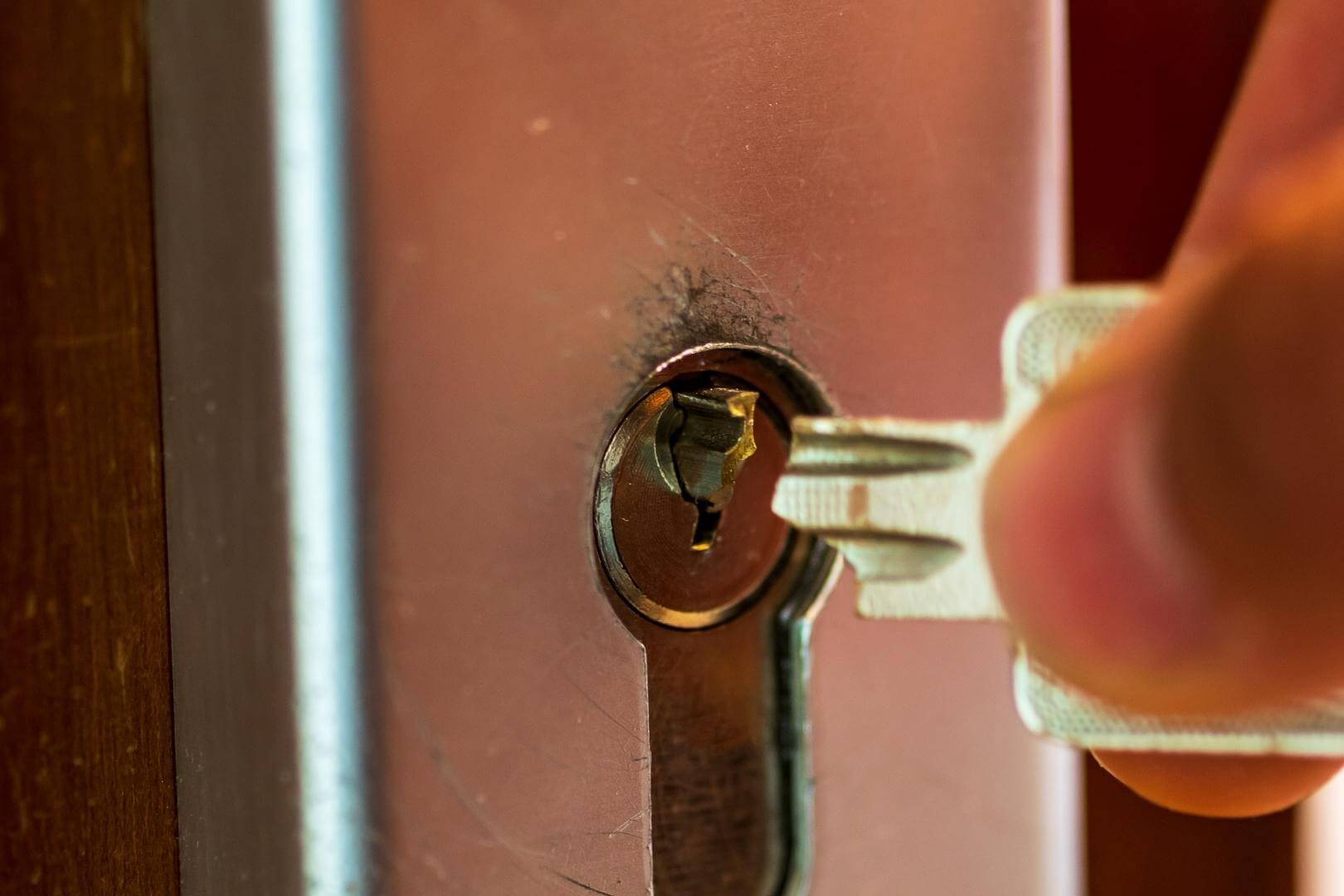If you have a problem with your door lock, you might want to fix it soon. You can solve it yourself, or it may require a locksmith. Some lock problems may cause a locked out or create a security risk to you and your family.
Here are several common lock problems and what you can do.
- Sticky Door Lock
- Key Won’t Turn
- Key Broke in Lock
- Door Lock Not Aligned
- Loose Door Knob and Door Handle
- Frozen Door Locks
Sticky Door Lock
If your door lock sticks, it could be because dirt and grime build up in the lock over time. Dust may get into the lock through the keys, causing the key to jam or making the lock mechanism hard to turn.
You can try applying silicone or PTFE based lubricant such as WD-40 or Tri-Flow to the keyhole or key. Insert the key in and turn it a few times to work the lubricant into the lock mechanism. Never use oil or graphite-based products to lubricate locks because they could clog the lock mechanism later.
If that doesn’t work, a locksmith will have to disassemble the lock to check whether it can be repaired by cleaning or replacing the part.
Your lock hardware will have wear and tear, so regular lock maintenance will help ensure that your hardware last longer.
Key Won’t Turn
Sometimes locking or unlocking the door, the key is stuck in the lock and doesn’t turn. Remove the key by pulling it out directly, and do not force the key to turn. If you use too much force, you might break the key off and leave the broken part inside.
If the key does not turn, you might be using the wrong key. Check that it’s the correct key for the lock.
If the key is new, perhaps the grooves were poorly cut and do not match the lock properly. You could use a different key to test.
You can also try lubricating the lock with PTFE or silicone based lubricant.
Wear and tear can also occur on your lock or key. The lock cylinder could be faulty, or the key has cracks. You should reach out to your local locksmith to check and fix it.
Key Broke in Lock
What if your key snaps off in the lock?
You can try to grip the exposed broken key in the keyhole with a long nose plier and gently pull it straight out.
If the key is still stuck, we suggest you reach out to a local locksmith. Our skilled locksmith will usually use a broken key extraction kit to remove the key without causing further damage to the lock. They might also remove the lock cylinder and insert a stiff wire into the cam slot at the back of the cylinder to push the key out.
Door Lock Not Aligned
The door lock bolt can fully extend and retract, but you can’t turn the key when you close the door. Or the key doesn’t operate smoothly. This means the latch did not catch the strike plate properly. There should be scratches on the strike plate where it’s misaligned.
Potential causes for the door latch misaligned with the strike plate:
- The door is sagging.
- The lock or strike plate is loose.
- Door warp, expand or contract because of the weather.
You might fix this by:
- Tighten the screws on the door hinge, strike plate or locks.
- Adjust the strike plate position. If the strike plate is not adjustable, file the slot in the strike plate to enlarge the opening. You can also buy an adjustable door strike.
Loose Door Knob and Door Handle
The door knob or door handle may loosen over time. Start with lining up the knob or handle. Turn it to ensure it’s properly aligned and latches the striker plate on the door frame. Then you can tighten the locks.
Door locks with exposed screws are straightforward to tighten. However, there are locksets or lever sets that have hidden screws. The ways to access hidden screws will vary and may require some ingenuity.
A few examples:
- Door knob with a little hole. Use an ice pick or something similar to push in the little hole. The knob should pull off, then remove the escutcheon or rose cover to expose the hidden screws.
- The door handle has a little hole, but you have to use a hex key to remove the screw first. After that, the knob and escutcheon come off, and you can access the hidden screws to tighten.
Frozen Door Locks
If you live in a place with a winter climate, your door lock could freeze. When moisture enters the lock, and it’s below freezing temperature, the key may not slide or turn or slide to open the door. Don’t force the key, or it might break. You can fix this by warming your lock with a hairdryer. You try heating your key with your car’s heater or hot water. After the key is warm and dry, insert and turn the key slowly. You can also buy commercial aerosol lock deicers at hardware stores.
It’s good to be aware of these door lock issues so that you can act quickly. Some of these problems can be handled by the average homeowner. If you require a professional locksmith in Perth, get in touch or call 0477 724 100.


